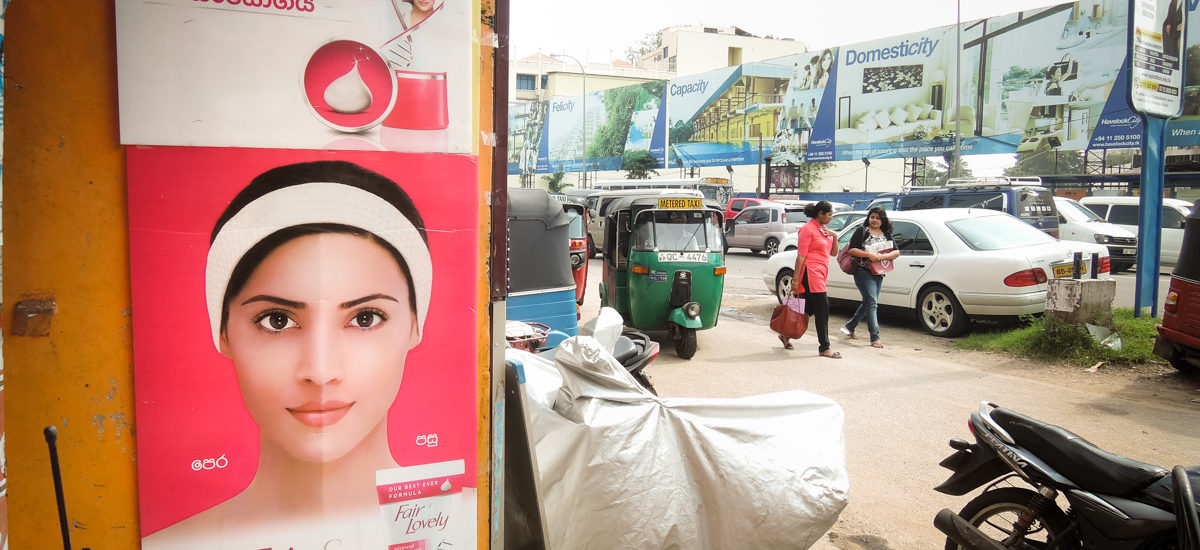Featured image courtesy Global Press Journal
It certainly was a good Women’s Day this year, when I read on Groundviews about two very brave women who related their experiences of sexual harassment, one in the public service sector here and the other at one of the country’s top garment manufacturers/exporters (8 and 9 March 2018).
It is to be hoped that more people will write in their stories, using anonymity if necessary ‒ as I must in this brief post.
I cannot speak to the public service sector here, having few friends who are so employed and with no such experience myself. Nor have I ever worked for a garment manufacturer. But this is not important: the experiences are so similar, whatever the sector.
It is understandable that names of the workplaces were not given, and this is in no way a complaint against that: a person who experiences such harassment is herself or himself able to deem what is most appropriate.
Still, after reading about the garment company, I looked at the websites of two of Sri Lanka’s largest such companies, just to see what they looked like visually, and in light of their market focus, pitched towards the foreign companies that they produce apparel for. Both websites’ homepages use the technique of a scrolling slideshow of photos. Here is a brief description of the photos themselves:
Company A
- A fair woman (ethnicity unclear) in black lingerie, looking away
- A young man of unclear origin in sports clothes and intently competing in high hurdles
- A white woman in a yellow bikini, smiling and holding a surfboard by the beach
- A fair, female dancer, dressed in a ribbon-like costume
- A fair woman, perhaps of mixed ethnicity amid a swirl of butterflies, using her own hands to cover her breasts, with a dreamy faraway look
- A serious Sri Lankan cricketer (man)
Company B
- A white woman in a black bra lying on her back. The photo is of a close up view as she looks right into the camera
- Two men (ethnicity unclear) viewed from mid-range with backs to camera, holding hands and jumping in the air in a grassy field as if having fun, and wearing long shorts and white t-shirts
- Woman, light-skinned, of perhaps mixed ethnicity, in red, white and blue striped underwear and a red strappy top, close up, lying down on her side and looking directly into the camera
- Two men and one woman, white, laughing, the guys bare bodied and the woman in a white top, playing with a water hose
- Shot from behind of a topless white woman, pulling down one side of her jeans to show underwear (perhaps a G-string)
- A white woman in a yoga pose, wearing long black pants and sleeveless white top
- A fair woman, lying on her stomach, wearing red bra and red underwear, with her head turned slightly up and smiling
No doubt, the companies have determined that such images appeal to the clientele of this website ‒ images that that sort of people like to see, and images that by now can even be termed banal in their pervasiveness.
But with all the photos out there to choose from, and the fact that garments are now sold to a truly multiethnic public of manufacturers and buyers all over the world ‒ even if a country may be seen to be largely white ‒ the choice seems to truly reflect deep-seated biases of the usual sort. It is interesting to note that
‒ The men are doing serious sports or having innocent fun;
‒ The women are rarely serious (and the serious ones are fully clothed) with the others looking deliberately sensuous or provocative
‒ The predominance of white people portrayed in these ads, and the view of the women among them, in a country where few actually reside, points to blatant prejudice and sexism.
Why don’t these local companies use photos of very beautiful women from their own ethnic communities? Or aim to show how multiethnic Sri Lanka is?
In the end, the companies highlighted here are committing the ‘worst’ mistake of all (in the business world): they engage in bad business practice, in a quickly changing society, where old ways of portrayal are often seen as crude, self-centred and tacky, and by potential investors and buyers as potentially a reason to go somewhere else ‒ or, at the least, make one wonder what policies the companies actually have in place to combat the harassment of women and men.
As the two women authors to Groundviews have shown, and despite company declarations, there often is no policy on this, except to turn away and enable the harasser, which, in the wide world outside of business, looks like what it actually is: at the least, cowardice; at the worst, collusion.
Editor’s Note: Also read the articles referenced here, “Change is not Courage in a Boy’s Club” and “A Hellish Year: Misogyny in the Public Service Sector“.

